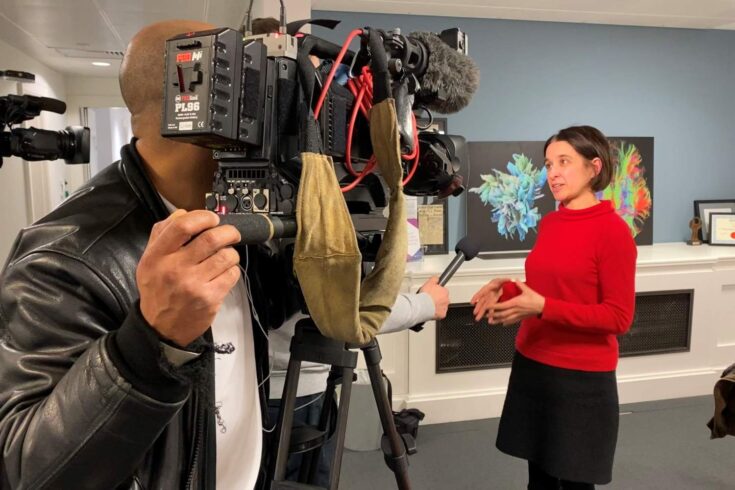It’s hard to understand what a pandemic is really like until you live through one. Even though scientists around the world have been preparing for decades, actually living through a global pandemic is such a different experience.
Around Christmas 2019, there were quite a few reports coming in about a novel virus that was infecting people in Wuhan, China. Through our work at the MRC Centre for Global Infectious Disease Analysis (GIDA) at Imperial College London, we have strong links with research around the world.
Because of these connections and years of pandemic planning, we had a sense of what to expect. We began pulling the information together to build the models needed.
Our analysis published on 16 March 2020 illustrates the challenges facing all governments in deciding how to respond to the virus. Many governments, including the UK, chose around this time to implement lockdowns but others opted to mitigate impact with less restrictive interventions.
Modelling isn’t just predictions
A lot of people think modelling is simply making predictions about the future, but actually it is more about the characterisation of a complex situation. It involves a lot of data analysis that we then use to formalise the way we pull information together.
By looking at different variables, we can build a picture that helps us understand what to expect. For example, whether a virus is airborne or the severity of the infection. Then, we can see how different interventions at different stages can affect that.
We realised very early on, even before published reports came out, that the infections were spreading rapidly. When the infections started to appear beyond China through travel connections, we knew that the underlying infection level must be very high to generate that.
Unprecedented numbers and impact on healthcare
By 10 February 2020, we had generated a preliminary estimate of the infection fatality ratio at 1%. This is the proportion of people infected with coronavirus (COVID-19) who end up dying of it. It was striking that we were in the region of what experts had been planning for with their worst-case scenario flu pandemic estimates.
In early March 2020, we met directly with the NHS leadership and discussed what the surge capacity of NHS could be. Everyone realised that it was too much. The surge could not be managed.
We knew scientists were a long way from vaccines or treatments, so we began factoring in the impact of non-pharmaceutical interventions (NPIs) to our models. We needed to see how these could reduce the number of infections and ease the pressure on the NHS.
I still remember the shock on journalists’ faces at the press conference after we published the report on 16 March 2020. At the time it brought home to me how unprecedented all this was.
We had been working in a very focused, isolated bubble with our colleagues for weeks, doing a lot of data analysis. So the reaction we got at the press conference was a stark reminder that the rest of the world didn’t realise something bad was imminent.
Global impact
By mid-March 2020, we were inundated with requests from various countries to support them with models and to inform their own pandemic policies.
We developed a global modelling framework and a web page with COVID-19 planning tools, including a lower and middle-income countries short-term forecast dashboard.
This is still used by global organisations and feeds directly into the World Health Organisation (WHO) COVID-19 essential supplies forecasting tool. It is used by countries to plan the commodities they require based on what they think might happen in the next 30 to 60 days.
We’ve always worked closely with the WHO. Now, we are having broader conversations with other organisations such as the International Monetary Fund (IMF) or the World Food Programme.
To me, these new connections extend the application of our work, demonstrating clear global impact.
Science under the spotlight
The extra attention given to our work on modelling infectious diseases has been useful. It makes our public engagement work easier since basic concepts like the “R number” are now very well known. When I speak to people about how the R number for malaria might be in the hundreds, people immediately understand what that means, and they are shocked.
But on the other hand, it’s much more difficult to do science under the spotlight because science isn’t perfect. As scientists, we change our minds when there is new evidence.
This iterative, self-correcting aspect of how science works is sometimes misunderstood under the harsh glare of intense public scrutiny on our work. This can be very stressful so I hope we can move to a more normal way of working soon.
The pandemic broke the flu
It’s a really interesting time in public health.
The access to rapid diagnostic tests opens up the possibilities of applying the lessons we’ve learned through the pandemic to other respiratory pathogens.
The COVID-19 pandemic and the associated behaviour changes drove seasonal flu numbers to historic lows.
Just imagine if we could apply some of those behaviour changes and public health controls every winter for flu outbreaks.
These are interesting ideas and approaches that policymakers and public health officials will need to consider as we continue to learn the lessons that the pandemic is teaching us.
Top image: Professor Azra Ghani's interview from the press briefing at the Science Media Centre on 16 March. Credit: SL van Elsland. All restrictions effective at the time these photos were taken were observed.



